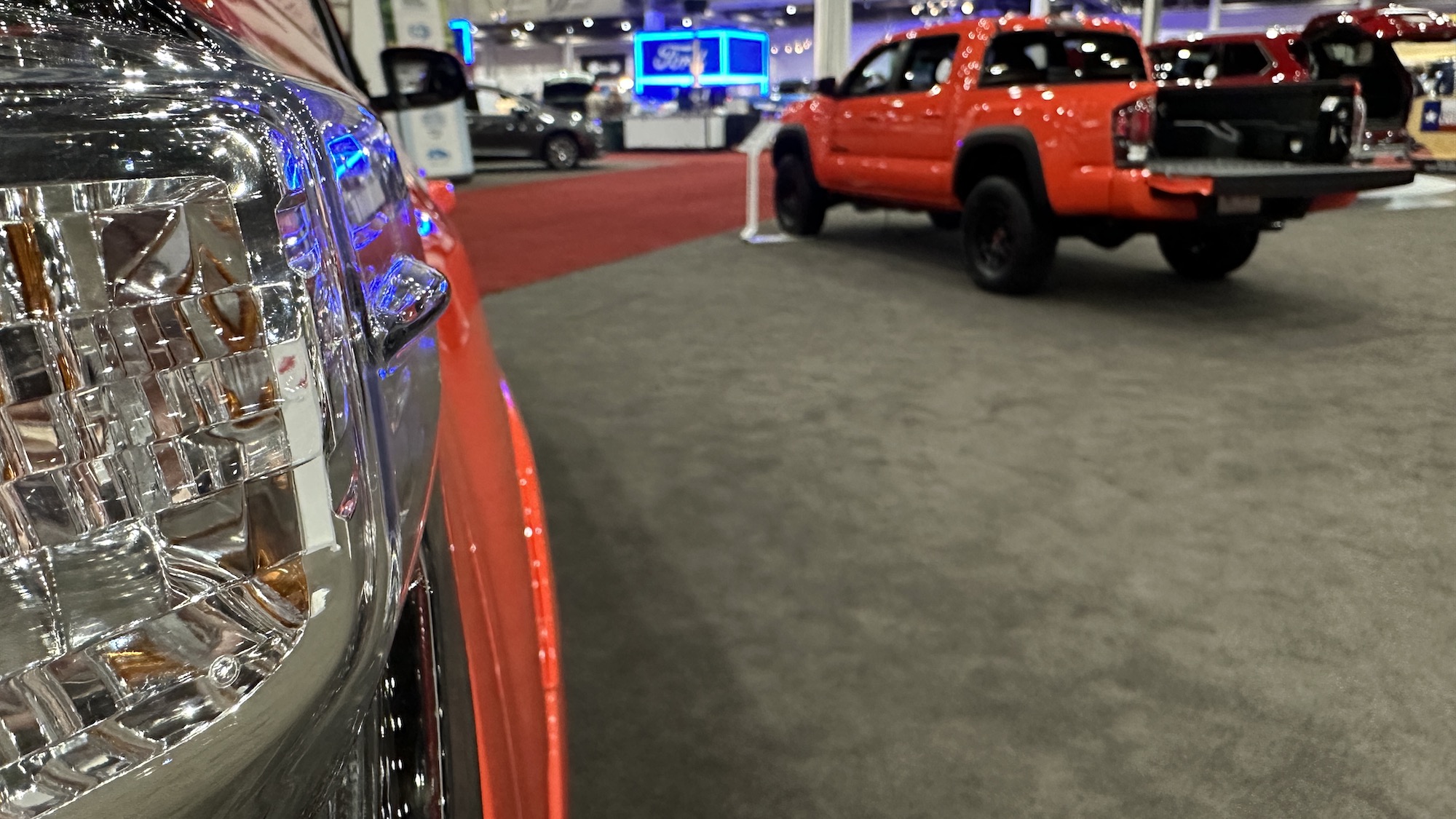

Take a closer look at a Toyota Tundra pickup truck, and among other places, you’ll see ridges embedded in the housings of the taillights and headlamps. The shape of these 2- to 3-inch lumps evoke a distant memory of the submarine game piece in a Battleship board game, and might go unnoticed if you’re not looking for them.
But once discovered, you can’t unsee them, and you’ll find yourself hunting for them on everything from the Toyota Tacoma to the brand’s Sienna minivan. Technically, they’re called aero stabilizing fins, or ASFs, but Toyota aerodynamics and ride handling specialists Cory Tafoya and Jesse Rydell say they’re affectionately called fish fins.
Here’s how they work, and why engineers use them on vehicles.
Small but mighty engineering
Odds are that you’ve noticed tiny symmetrical dimples all the way around any average golf ball. These depressions have a purpose: Unlike a ping-pong ball, which must travel only short distances, golf balls are designed to soar into the air for hundreds of yards at a time. The dimples reduce air friction, directing disruptive air around the back to reduce drag and create a smoother flight.
“There’s no question a multi-layer cover and technologically advanced core will help your game,” Jonathan Wall wrote for Golf.com. “But without those dimples on the cover, you’re basically driving a Lamborghini with a Ford Pinto engine.”

In the automotive world, modern race cars employ a longitudinal “shark fin” along the spine, not for a fierce look but to maintain stability by directing airflow and pressure properly. Off the track, everyday drivers on US highways and city streets don’t need that kind of performance, but they definitely appreciate stable, smooth driving dynamics, and that requires a slightly different tool to direct airflow. These components, also sometimes called vortex generators, do something a bit counterintuitive: by creating air vortices, they help the air hug the sides of the vehicles.
In general terms, a fish fin, or ASF, causes the flow of air to follow the side surface of the vehicle more closely, affecting the ride in a positive way. With extensive testing in the wind tunnel and on the track, they started to find that even though those fins were very small, they were having a noticeable improvement on ride and handling, Rydell tells PopSci.
“If we can avoid random disruption of airflow, it has an effect on the dynamics of the vehicle,” says Tafoya. “The high-level idea is to control the air in a way that’s consistent every time you drive it, or to try to make it as consistent as possible. And if we can keep that airflow close to the vehicle, we can manage what the driving dynamics feel like.”
‘I drove two and a half hours for this piece of plastic?’
The first time Mike Sweers, the executive chief engineer for the Toyota Tundra, Sequoia, Tacoma, and 4Runner vehicle programs, saw these aero stabilizers, he couldn’t believe his eyes. He had been called to Japan for meetings, and one of his teams invited him to the proving grounds, far from the office. When Sweers arrived, the team presented a new solution that they said could reduce body roll and increase stability of the Tundra as it passed large vehicles, like 18-wheel trucks.
“’The vehicle becomes much more stable if we put these wings on the vehicle,’ they told me,” Sweers remembers. “And I’m thinking, ‘oh, this sounds great,’ and I’m looking at graphs and data and that, and I’m thinking they’re going to take me out and they’re going to have some big aircraft wing on the side of the truck, right? Then the guy reaches in his pocket [and pulls out an ASF] and says, ‘This is our proposal.’”

Sweers thought to himself, “I drove two and a half hours for this piece of plastic; are you kidding me?’” But as he placed the fish fins on the truck, tested it on the track, and pulled it off and tested it again, he was convinced. He spent four hours on the track that day, noting the stability while passing or experiencing crosswinds.
Balancing road noise, drag, and driving dynamics
Tafoya says he sees the influence of the fish fins on straight stability, as they generate disruption in the airflow that creates a tighter stream around the vehicle. It may seem paradoxical that a lump creating disruption in airflow channels can direct the air, but that’s exactly what it does. With that tighter airstream, drivers feel a more precise steering field.
“Sometimes, people will allude to some vehicles not having a very defined center or feel it’s kind of vague in the steering,” he says. “And [ASFs] actually do help to improve those characteristics too.”
Employing a wind tunnel for testing, Toyota engineers use smoke visualization (smoke trails that demonstrate air flow) to see where the flow is fastest. That helps the engineers decide where to place the fish fins to maximize efficiency.
And as it turns out, designers and engineers interface fairly often to talk about these small pieces of plastic. There’s a balance to ensure that factors like road noise and the amount of drag on the vehicle are not affected.
“We have it down to where we know kind of what areas we can apply [ASFs] and avoid disruption to other functions,” Tafoya says. “Surprisingly, for such a small feature it takes a lot of time in negotiation.”